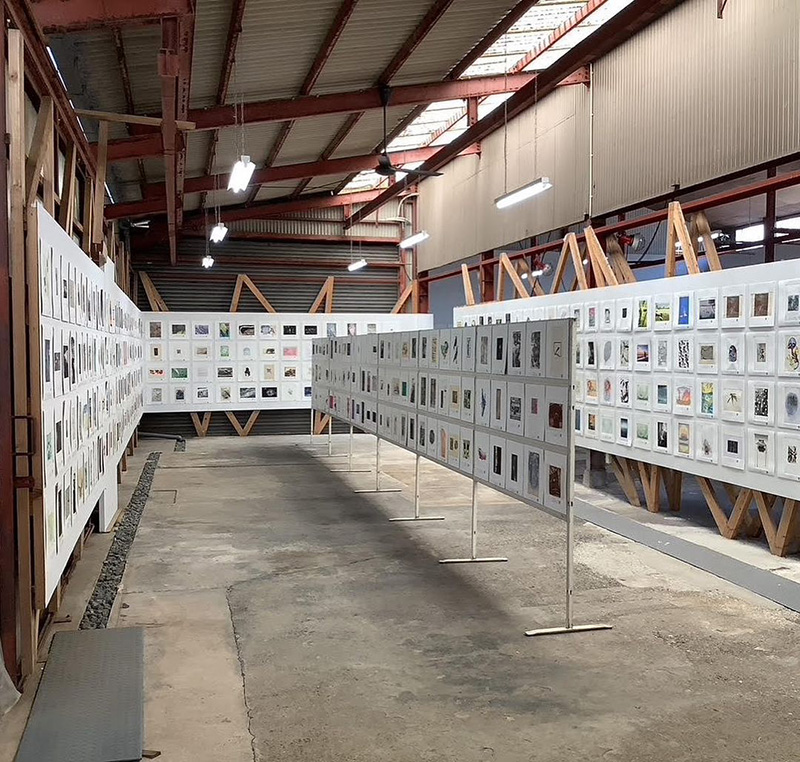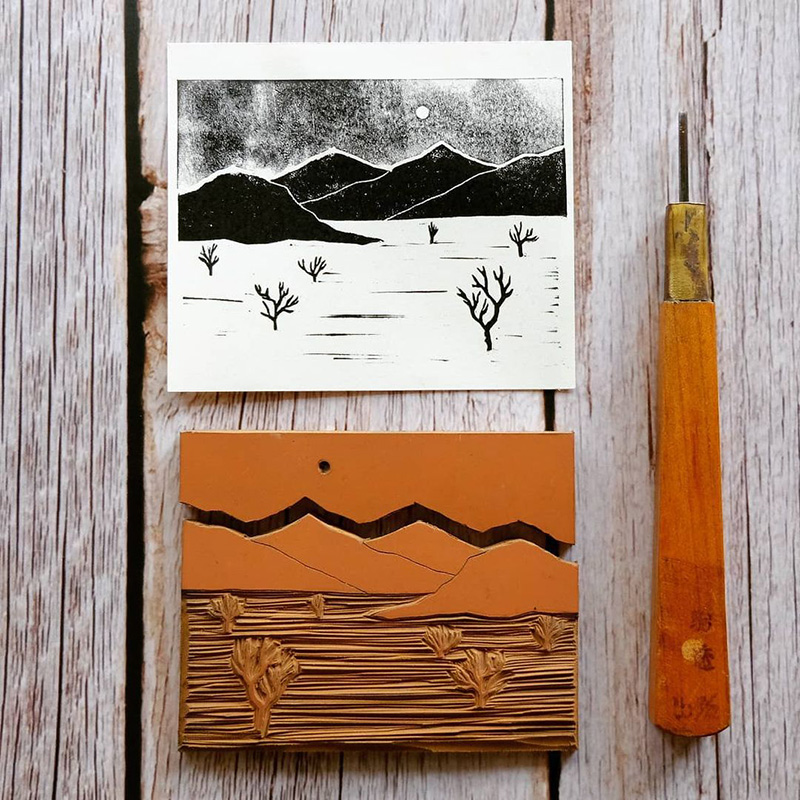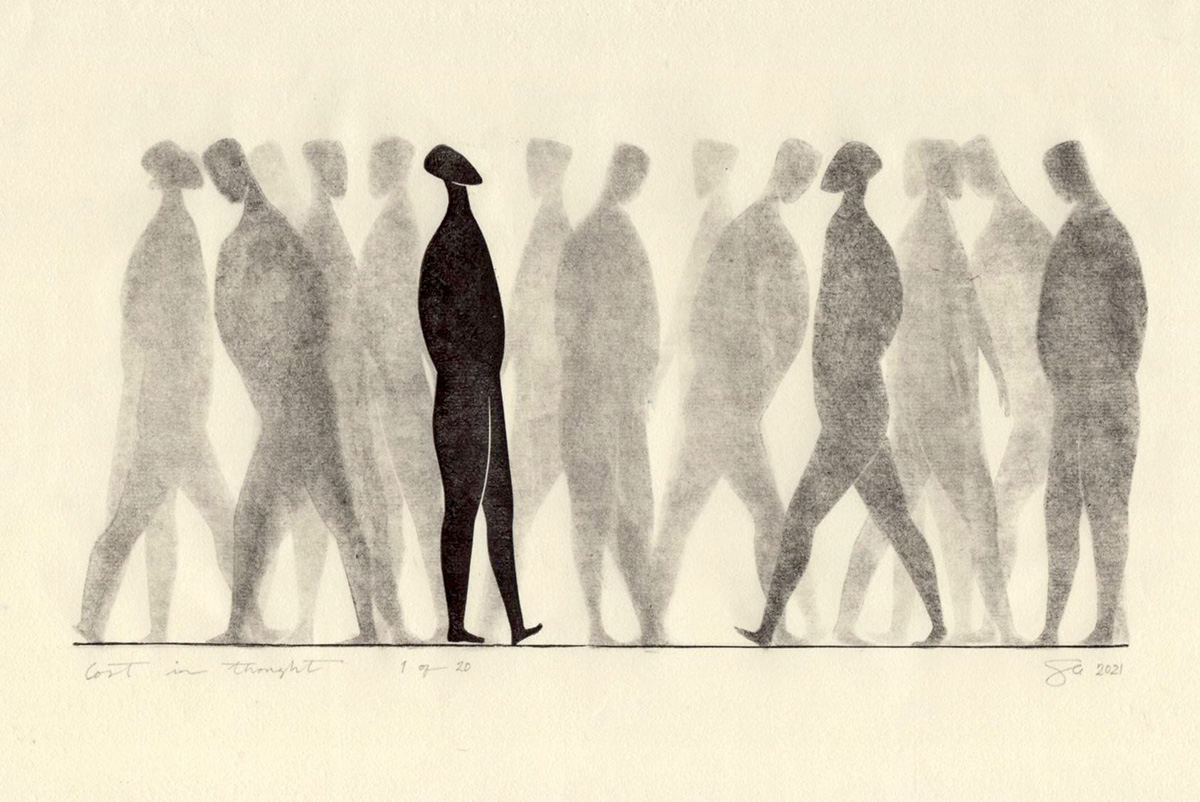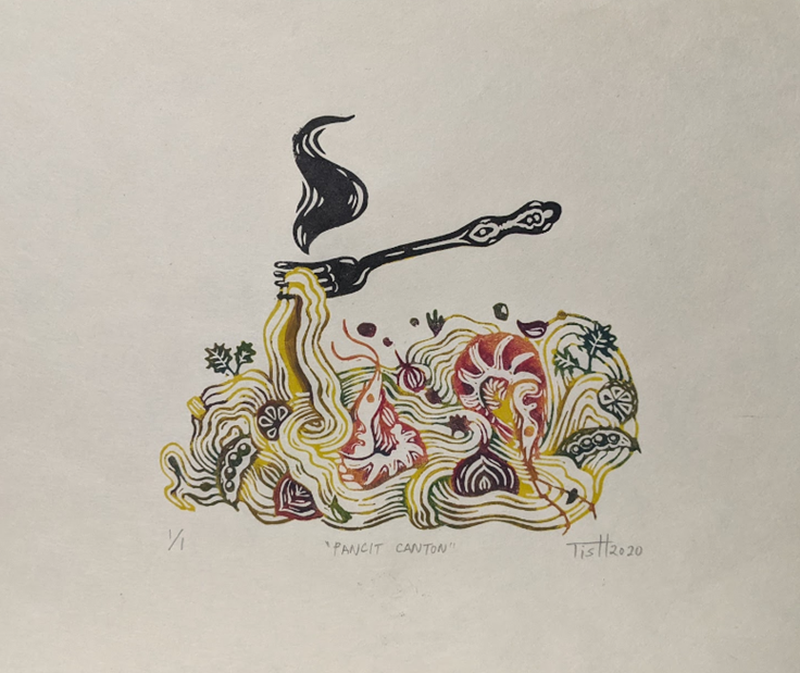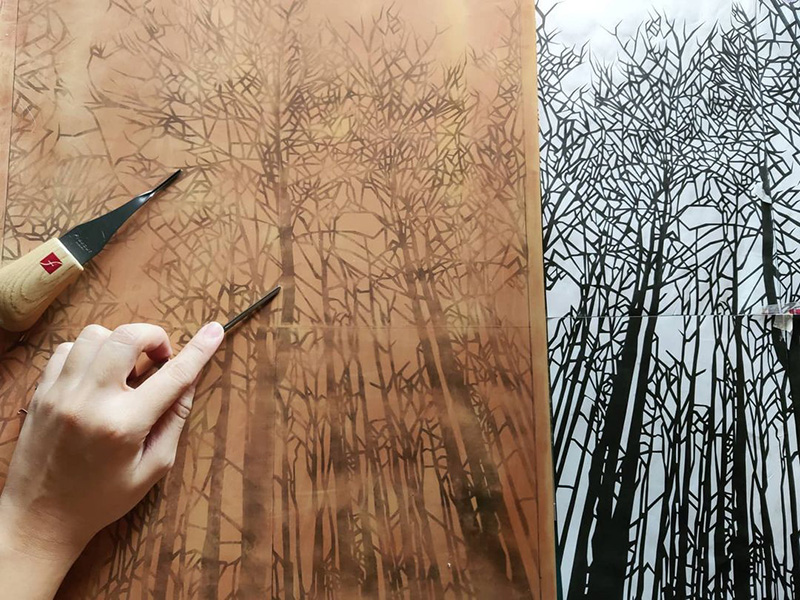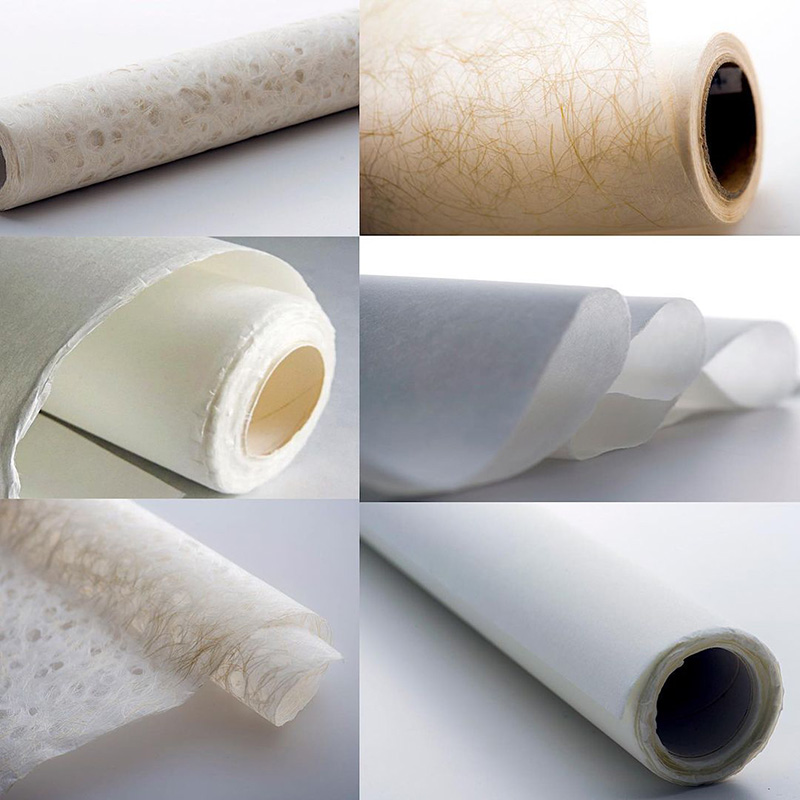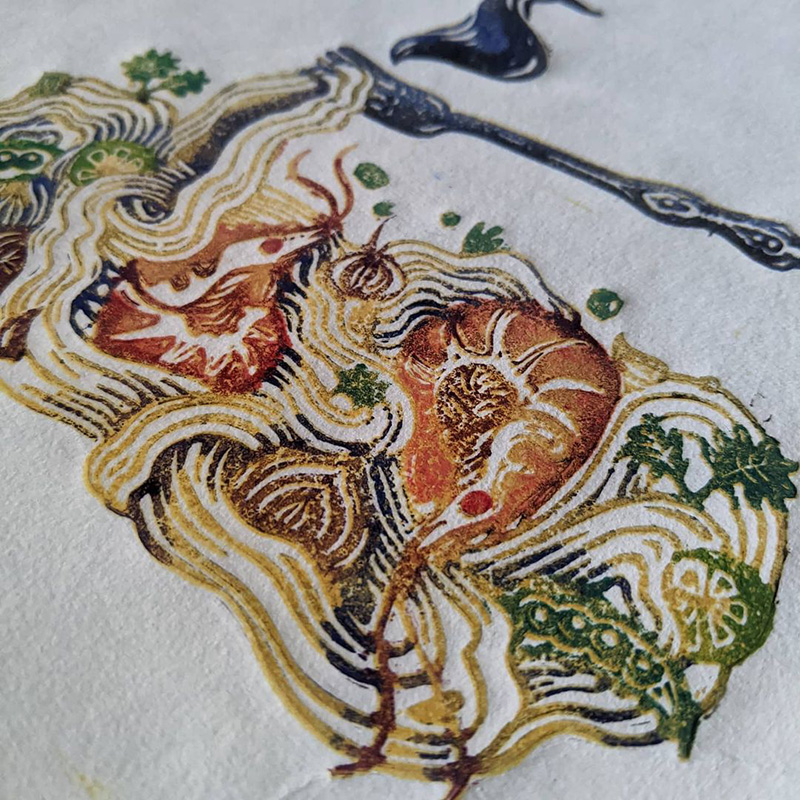“Striking” is a printmaking term that means to lay paper on an inked plate to make a mark. It is also a convenient word to describe the winning works by three Filipina printmakers that bagged recognition at the 2021 Awagami International Miniprint Exhibition (AIMPE).
AIMPE is an initiative of Awagami Factory, an internationally recognized producer of washi paper. The production of washi is registered as a UNESCO intangible cultural heritage, making its use an addition to its legacy. Historically washi paper is used in ritual objects in temples, paper crafts such as kite-making,origami, and more notably in early Japanese art, such as the iconic ukiyo-e print "Great Wave Off Kanagawa” (ca. 1830-32) by Katsushika Hokusai.
Awagami Factory’s roots come from being a family-run business that persevered in its production of washi paper despite the challenges brought by the end of WWII. The same perseverance was felt in realizing the 2021 AIMPE edition. Despite the challenges presented by COVID, organizers saw a total of 1,821 prints from 1,375 artists hailing from 58 countries.
The first AIMPE edition began in 2013 to mark the facility’s 25th anniversary with the goal of promoting and educating people about washi paper. The bi-annual print exhibition is open to printmakers of any skill level with a primary requirement that prints would be made on any type of washi paper.
That being said, I had the pleasure of speaking to the three Filipina printmakers whose works were recognized in this edition: Cranfield Ink Prize winner Aileen See, Honorable Mentions Tish Hautea, and myself, Marz Aglipay.
The Three Printmakers from the Philippines
Aileen See is an architect who was awarded one of the major prizes, the Cranfield Ink Prize, for her work Lost in Thought. According to Aileen, she started her practice as a creative outlet while preparing for her board exam. “Besides architecture, I find printmaking to be an essential practice to keep the creativity going. They sort of feed each other in a good way. It keeps me from getting drained from the daily, and it's actually a constant source of inspiration and energy,” she says of her practice which can be found on Instagram (@oh.craft).
Aileen’s been working with washi for a little over a year and a half prior to joining the AIMPE. “What I love about it is the natural texture —it's raw, and very revealing of the process. I enjoy working with washi paper. Right from the tearing of the paper to size, it's very satisfying. The ink transfers to it beautifully. And I love the reveal of the print on the backside when I hand-burnish! It's amazing how much pressure such a delicate material can handle.”
Her winning piece Lost in Thought shows great familiarity with the medium where she manipulates ink and pressure of her plate on washi paper. The final result is an expression of movement among figures that appear to be walking whilst a still figure in full color stands in the foreground.
Aileen’s prize being sponsored by Cranfield ink made me curious as to how this ink differed from others. “In the short time that I have been printing with oil-based ink, Cranfield has quickly become my ink of choice—the Caligo Safe Wash products in particular. The ink leaves a sharp and matte impression on paper. I find that it pairs well with washi compared to the few other brands I've tried. Some tend to get sticky and leave fibrous marks on the edges of the print, which might be solved through a tweak in technique. Meanwhile, Cranfield inks are very easy to handle. I'm able to do more exploration, and worry less about the ink drying too fast, or bleeding onto the paper. Besides this, their Caligo products can be washed away with just water-a very useful feature. As much as I love the whole process of printmaking, it's the tedious cleaning that I'd be glad to be rid of.” She shares.
Pancit Canton, one of the prints that received an Honorable mention, is by Tish Hautea. Tish is a freelance art director and illustrator outside of printmaking. She owns the brand Sqooid which focuses on the production of hand-carved stamps and block prints. She also holds workshops where she introduces basic skills of printmaking to a wider audience.
Tish’s preferred medium of translating ideas into tangible art is through printmaking. “I have always used relief printing or rubber cut as my main medium because of the limited resources I have as a printmaker. [Having] no direct access to presses and the tools and materials which are scarce here in the Philippines, rubber cutting is the easiest way to achieve a print. I am forced to be creative or at least try to experiment on the limitations of the medium given the circumstances.”
Sourcing printmaking materials is a challenge both Aileen and Tish mentioned in our conversations. They both use rubber soles for making relief prints; this is similar to the rubber sole used by one-man-operated key duplicate and stamp stalls in Recto. It is also the same material used in making shoes which is tougher to carve compared to linoleum blocks used in western styles of printmaking. Linoleum blocks are not readily offered in art supply stores in Manila, unlike rubber sole, which can be sourced locally.
“I learned that there is the western style of printmaking and then there is the Japanese style of printmaking. I got curious as to how the Japanese made their prints so I decided to buy a few sheets of washi paper from Artwhale, its brand was Awagami Factory. I tried their printmaking style but found it relatively harder than the western style, so I often go to Awagami's page for inspiration. I also watched a few YouTube videos on how Japanese relief print works. Until one day they posted on their social media pages that they will hold the international mini print exhibition. I took my chances and submitted my work. I was also curious as to what their standards were for a print.” Tish said.
In terms of print standards, AIMPE accepts prints made using different methods, such as hand-pulled prints, inkjet digital prints, and intaglio among others. It’s the nuances of washi paper that make it more challenging to work with compared to machine-produced paper, which is often smooth and consistent in its color. Washi paper, on the other hand, comes in different varieties.
“I submitted two prints because I wanted to see what they were looking for in a print,” shares Tish. “When the Pancit Canton artwork got shortlisted I immediately compared it to the work that didn't [get shortlisted]. It's like I'm learning at the same time. I also tried to dissect how the winning prints were made. The pieces seemed very hard to do. The versatility and durability of washi paper rivals the thick and expensive papers we usually buy. During my printmaking exercises I accidentally dropped the washi paper on a puddle of water outside. The paper was so strong that I was able to wash it and remove the dirt that clung to it. Of course, not all washi is made the same but the fact that I was able to save the print is mind blowing,” she explains.
Last but not least is my work “SITSERYA,” which is among the shortlisted works. As the chief creative behind Marz Today, I am preoccupied with creating stamps for small businesses and producing washi tapes for artists. As a self-taught artist, my practice is heavily influenced by Keshigomu Hanko or eraser stamps. It is viewed as a hobby in Japan, but I was told by peers that my work could pass for a printmaking practice. That being said, my familiarity with washi paper is limited to washi tapes, a decorative tape which is all the rave of folks in the planner community as well as those who collect them.
Unlike Aileen and Tish’s relief prints, my work was carved from erasers — the same kind you’d find in your office supplies. I found out about AIMPE through Angela Silva, a fellow printmaker. AIMPE was brought up after we had Print Day in May in the Philippines, an effort spearheaded by Angela where she gathered both new and seasoned printmakers to talk about their practice.
Luck at First Strike
A few things these three printmakers share in common — apart from being all women — is that they are all self-taught artists, and it was their first time to participate in AIMPE. “I have entered in other art contests in the past, but this is my 1st time joining an international printmaking contest. I was joining more for the exposure and general enthusiasm for the craft. The process was difficult since it was open themed so I just focused on what I knew and tried my hardest to do the best print. I used Pancit Canton as my main subject to introduce something Filipino to the contest. I chose noodles because it is relatable to both our cultures.” Tish said of her experience.
Aileen, on the other hand, has had a busy year doing print work. “It's my first participation in AIMPE. Prior to this, I joined the 22nd Triennale Grenchen, a miniprint exhibit held in Switzerland last September. That was my first participation in any art exhibit whether local or international. I received an invitation from the curator so I knew I couldn't pass up the opportunity.”
As for myself, who finds making prints on bond paper already intimidating, it’s pretty mind-blowing for my work to be recognized, considering the scale of the work I do is quite small, usually the size of a calling card. My little experience in exhibiting prints locally often comes with a lot of self-doubt, so this comes as a validation for my creative work.
Collectively, our experience participating in AIMPE has proven to be a good measure of skill and source of external validation for our work. If you find inspiration to start exploring printmaking but find it hard to find tools, resourcefulness is a good way to innovate your practice. And if you’re already practicing and interested in building a portfolio, the AIMPE would be a good place to start.
Aileen See, Tish Hautea, and Marz Aglipay’s AIMPE prints are currently being exhibited at the Hall of Awa Japanese Paper Museum and "Inbe Art Space" in Tokushima, Japan until November 7 (Sun), 2021.
All three printmakers are also participating in “Limbag Kamay”, which runs until October 25, with most works under the 'Relief' Category. To view their works, please visit the shop or start here.

